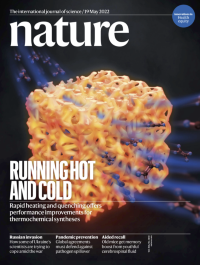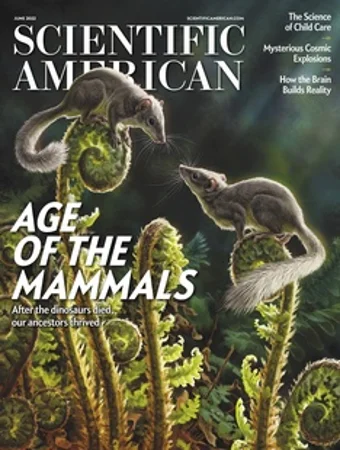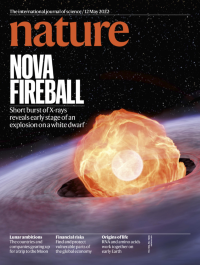
- COVER STORIES
The Casarabe people lived in southwest Amazonia around AD 500–1400, but understanding of this culture has been limited because the archaeological remains are covered in dense forest. In this week’s issue, Heiko Prümers and his colleagues reveal the discovery of new Casarabe settlements in the Bolivian Amazon. The researchers used lidar to scan the forest, revealing 2 large settlements (each covering more than 100 hectares) and 24 smaller sites, 15 of which had previously been known to exist.

The cover image shows Cotoca, one of the two large settlements, in which earthen mounds (one more than 20 metres high) and long causeways can clearly be seen. The team suggests that these results are the first evidence of agrarian-based, low-density urbanism in western Amazonia. They conclude that the region was not as sparsely populated in pre-Hispanic times as was previously thought.
Cover image: Heiko Prümers/DAI.
With six sets of chromosomes, the hexaploid cultivated oat (Avena sativa L.) has a complex evolutionary history. In this week’s issue, Nick Sirijovski and his colleagues present a high-quality reference genome for A. sativa alongside those for its close relatives the diploid Avena longiglumis and the tetraploid Avena insularis. By examining the three genomes, the researchers were able to trace genomic reorganizations in the crop’s evolution. They were also able to map the genes for important agronomic traits, highlighting gene families linked to human health and nutrition. With health and sustainability high on global agendas, the team hopes this new resource will bolster genomics-assisted breeding and trait studies to address these challenges and more.
Nature Magazine, May 19, 2022 – At industrial scales, chemical reactions are typically driven by applying continuous heat to the reactants. In this week’s issue, Liangbing Hu and his colleagues show that pulsed heating and quenching can enhance synthetic performance while also saving energy.

The researchers use a programmable electric current to switch between high and low temperatures very quickly — typically 0.02 seconds on, 1.08 seconds off. Rapidly quenching the reaction gives high selectivity, maintains catalyst stability and reduces energy usage. The cover image illustrates the heater in action for the pyrolysis of methane — the model reaction the team tested. Methane molecules travel through the pores of the high-temperature heater and are selectively converted into useful products.

June 2022 – Volume 326, Issue 6
Neural activity probes your physical surroundings to select just the information needed to survive and flourish
By György Buzsáki
Paid parental leave and high-quality child care improve children’s brain development and prospects for a better future
By Dana Suskind and Lydia Denworth
They scurried in the shadows of dinosaurs for millions of years until a killer space rock created a new world of evolutionary opportunity
By Steve Brusatte
Twenty years after their initial detection, enigmatic blasts from the sky are starting to deliver tentative answers, as well as plenty of science
By Adam Mann

Nova explosions occur when a runaway thermonuclear reaction is triggered in a white dwarf that is accreting hydrogen from a companion star. The massive amount of energy released ultimately creates the bright light source that can be seen with a naked eye as a nova. But some of the energy has been predicted to be lost during the initial stages of the reaction as a flash of intense luminosity — a fireball phase — detectable as low-energy X-rays. In this week’s issue, Ole König and his colleagues present observations that corroborate this prediction. Using scans taken by the instrument eROSITA, the researchers identified a short, bright X-ray flash from the nova YZ Reticuli a few hours before it became visible in the optical spectrum. The cover shows an artist’s impression of the nova in the fireball phase.
New Scientist Magazine, May 14, 2022
Conservation efforts for waterbirds, such as the Dalmatian pelicans (Pelecanus crispus) pictured on the cover, have centred on creating protected areas to maintain suitable habitats. But it has been unclear to what extent protected areas affect species’ population levels. In this week’s issue, Hannah Wauchope and her colleagues present an analysis that suggests protected areas have a mixed impact on waterbird populations. The researchers examined 1,506 protected areas to assess how they affected 27,055 waterbird populations across the globe. By assessing population levels before and after the implementation of protection, and comparing this change between protected and unprotected areas, the researchers identified the mixed impact, but also saw a strong indication that areas that were managed for waterbirds or their habitats were more likely to benefit populations. As a result, the team suggests that conservation strategies will require not only an increase in the number of protected areas, but active management of those areas to have the best chance of success.